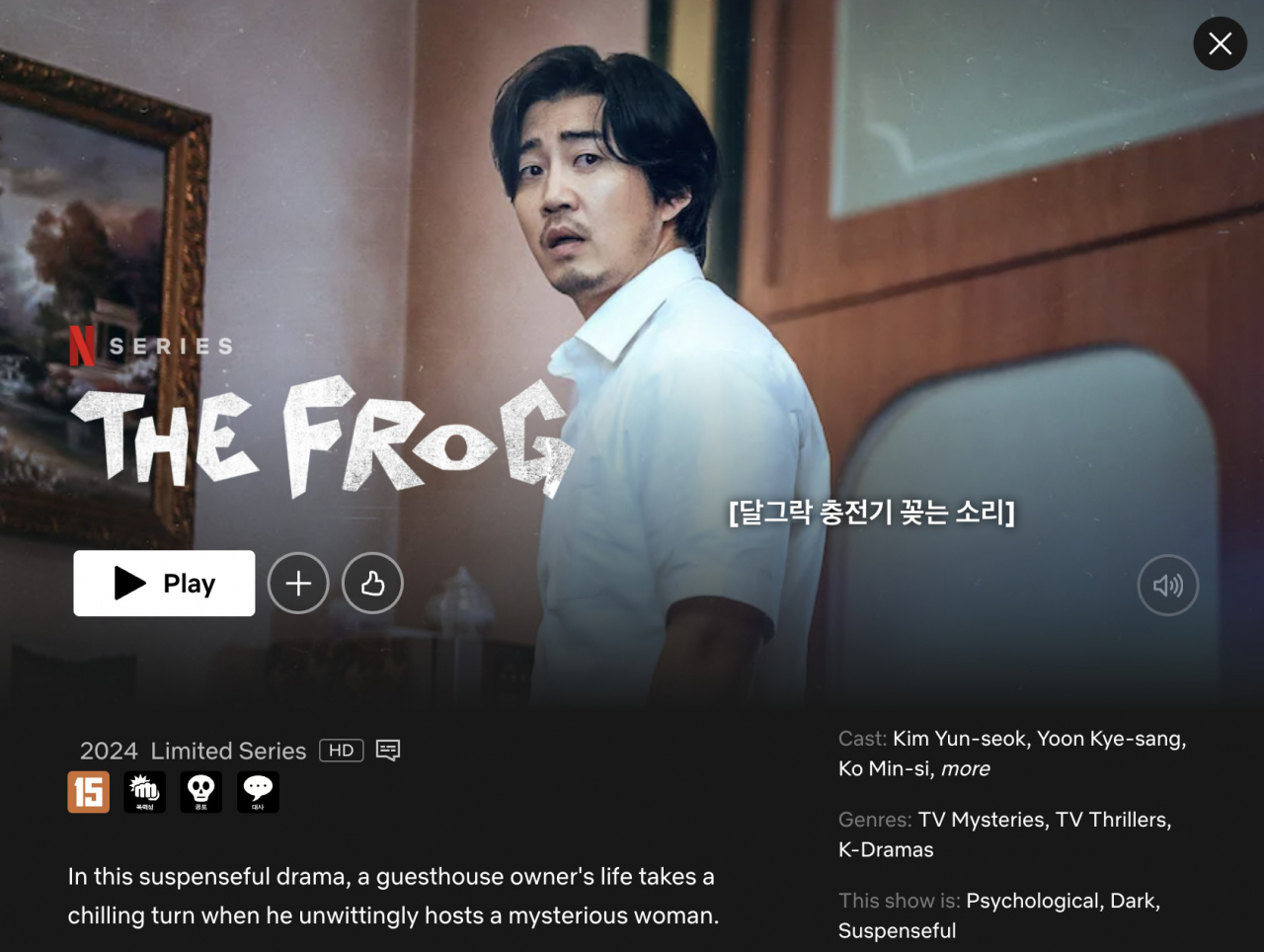
 > Entertainment > Film
> Entertainment > Film
 |
| Screen capture of Netflix's “The Frog” (Netflix PC website) |
Global streaming platforms like Netflix, Apple TV+ and Disney+ have been applying loose ratings, violating the Promotion of the Motion Pictures and Video Products Act, according to a report from a lawmaker on Monday.
According to Korea Media Rating Board data obtained by Rep. Cho Gye-won of the main opposition Democratic Party of Korea, Netflix led in violating the law by applying lax ratings for provocative content, recording 76 such violations since the government approved the self-rating system for platform operators in June last year.
The US streaming giant was followed by Apple TV+ (33 cases) and Disney+ (23 cases) in the number of violations.
Global streaming platforms were accountable for some 87 percent of the 152 violations. Local streaming platforms Wavve (seven cases), Tving (five cases) and Coupang Play (three cases) also broke the related law.
Amid an influx of online content on streaming platforms since the COVID-19 pandemic, the government has handed over to platform operators the right to self-regulate and rate their own movies and TV shows. The government cited a “delay in the rating evaluation” as the reason for the adoption of the voluntary rating system.
According to the law, the Korea Media Rating Board may intervene when violent or lascivious content is spotted through its intermittent monitoring and the rating of such content does not seem to correspond to the nature of the content.
Since monitoring has been based on random sampling, only 60 percent of the content had the ratings verified.
Netflix Korea said it had no comment to issue when contacted by The Korea Herald.
According to government data, the number of G-rated movies or TV shows, which anyone can watch, accounted for 21.2 percent of all rated content before the self-rating system was introduced. R-rated content, which persons under 19 are restricted from watching, was at 24.5 percent.
Following the introduction of the system, the numbers changed to 40.8 percent and 14.2 percent, respectively, suggesting that streaming platforms have applied standards more loosely in rating their own content.








